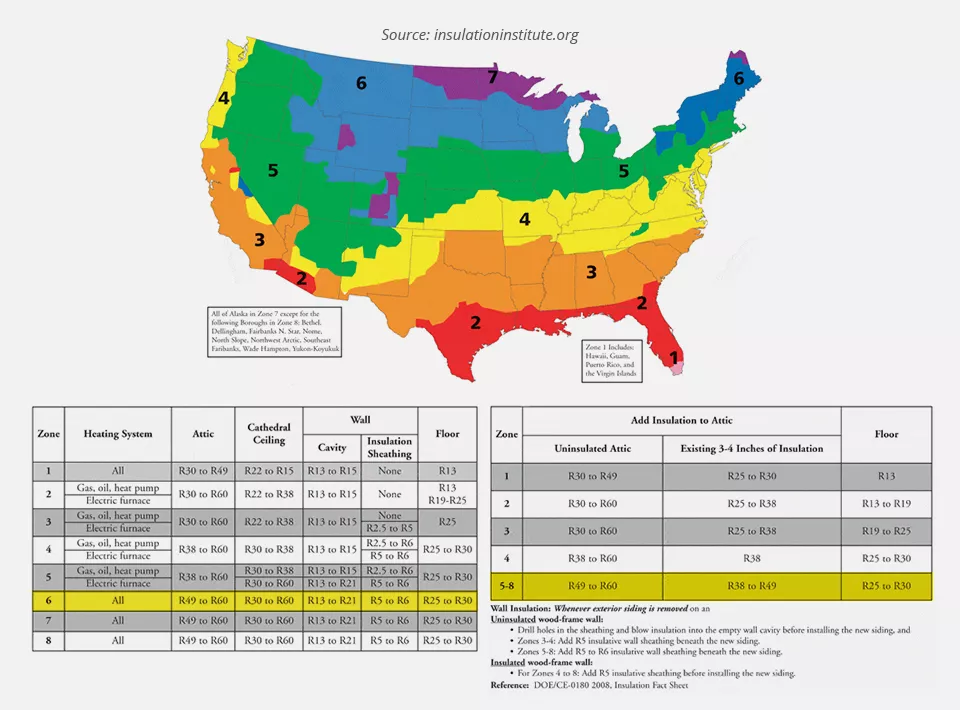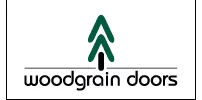- 5375 Williston Road, Williston, VT 05495
- Design Your Door
- Contact Us
How Much Insulation Does Your Home Need?

When it comes to energy efficiency, nobody’s home is a perfect 10 out of 10. There are always solutions for improving this and making your home more energy-efficient and comfortable year-round. One of the best solutions is installing insulation.
As you’re getting ready to insulate your home, one of your first questions will most likely be, “How much insulation do I need?” The amount of insulation your home needs primarily depends on two factors:
- The region you live in
- The area of your home that needs to be insulated
The Right Amount of Insulation for Your Home in the Burlington, VT Area
Insulation R-Value
R-value is an important part of insulation — it indicates a particular material’s resistance to conductive heat flow. In general, the higher the R-value (thermal resistance), the greater the insulation’s effectiveness.
The R-value depends on the insulation’s type/material, thickness and density. Although a higher R-value generally means a more effective insulator, the highest R-value possible may not necessarily be right for your project.
One example is if the space you’re insulating already has insulation. Also, houses in certain climates don’t need as much insulation as others. For example, homeowners in Florida don’t need to worry about insulating against freezing temperatures — the weather in Vermont is quite different.
That’s why different regions of the United States have different recommended insulation levels. Here in the Chittenden County area, we are in Zone 6.
What R-Value Do I Need?
In Zone 6 areas, the U.S. Department of Energy recommends R-49 to R-60 in the attic, R-30 to R-30 in cathedral ceilings, R-13 to R-21 in the walls and R-25 to R-30 in floors and crawl spaces. Because different types of insulation are made from different materials, the R-value for each will change, as well as the best application for each. Here is an overview of the R-values for the most popular types:
- Spray foam insulation: Closed-cell spray foam insulation has an R-value from R-5.5 to R-6.5 per inch of installed thickness. Spray foam is an excellent choice for attics, exterior walls, crawl spaces, basements and floors, as it offers great thermal performance and air sealing, as well as moisture resistance. It is installed as a liquid that expands to fill the space, including nooks, chinks and gaps.
- Fiberglass insulation: Fiberglass batts have an R-value that ranges from R-3.9 to R-4.3 per inch of installed thickness, while blown-in fiberglass can range from R-2.3 to R-3.8. Fiberglass batts are available in pre-cut sizes that are ideal for use between wall studs, ceiling rafters and floor joists throughout the living area of your Indiana home. Blown-in fiberglass is ideal for attics or walls and floors that are already finished, as it can be installed through a small opening with minimal damage and repairs.
- Cellulose insulation: With R-values ranging from R-3.1 to R-3.8 per installed inch, cellulose is a blown-in insulation ideal for attics and finished walls due to its simple installation with minimal damage. It is made from recycled newspaper that has been treated to resist fire and pests, so it is also environmentally conscious.
Learn More
What type of insulation do you need? Read about:
Call Overhead Door Co. of Burlington at (802) 448-4752 today or contact us online to learn more!

















